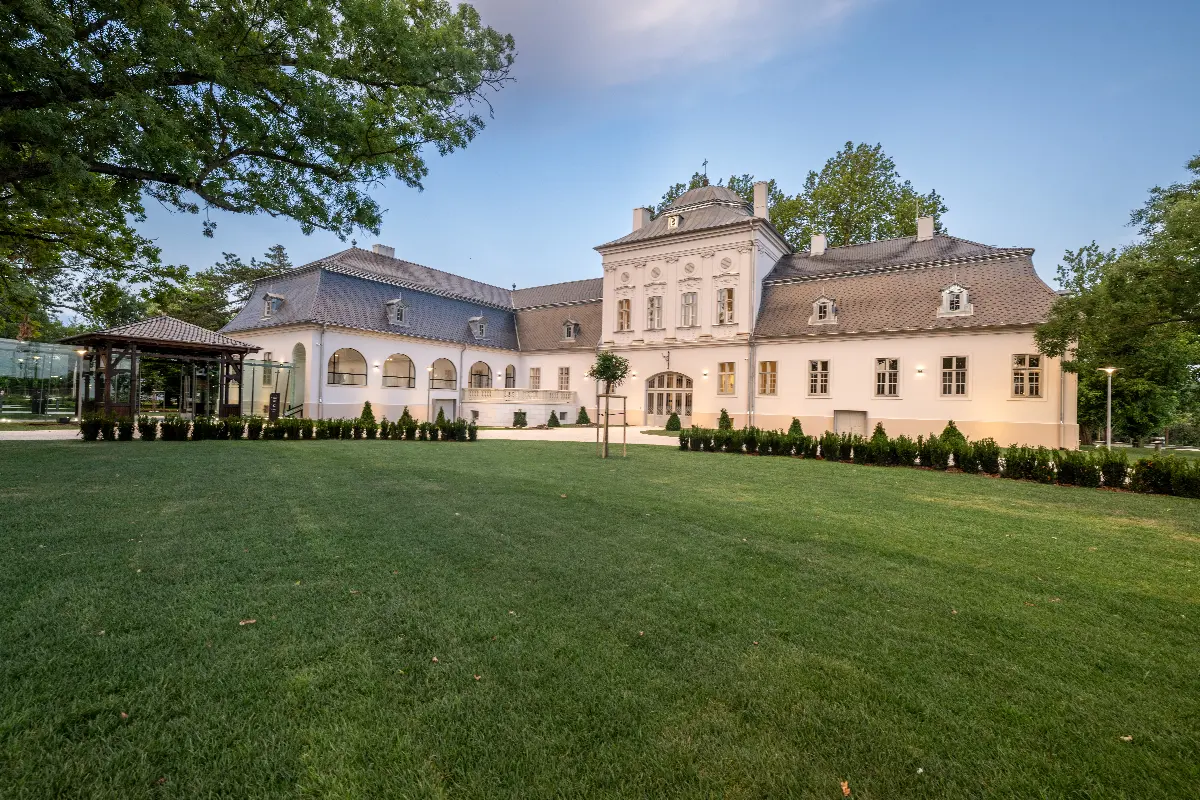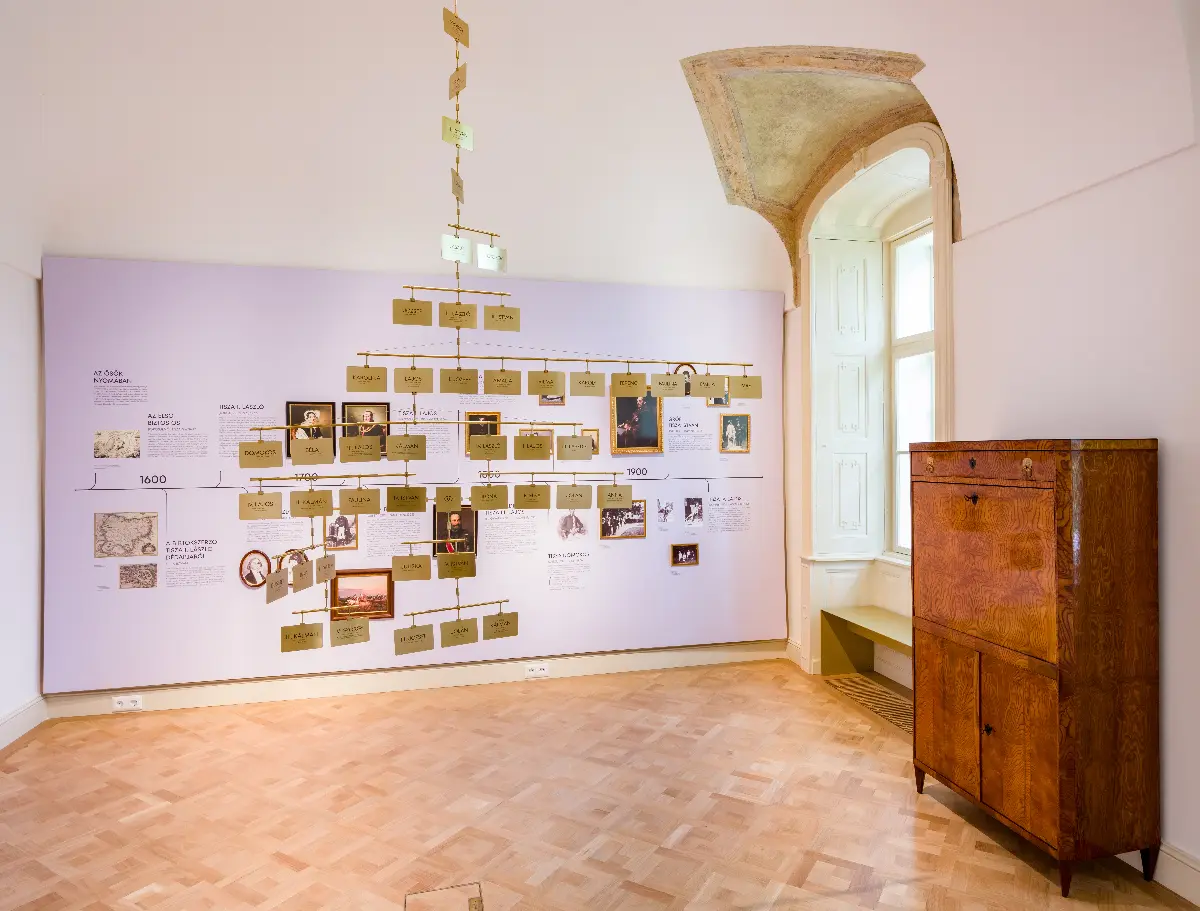
Helyszín címkék:
The past is revealed, and we can take part in it too - let's go on a castle tour!
Francisck Réka Alíz

Many castles and fortresses have been renovated and opened or reopened in the recent years. To what extent can the National Heritage Protection Development Nonprofit Kft. (NÖF) breathe life into the old walls?
24 castles and fortresses are part of the NÖF network, and we want them all to be full of life - for this, attractions, visual elements and programme offerings must be put together that attract the attention of various age groups, especially young people. We can be really proud of these buildings, but it is no use standing there in many parts of the country, in their full splendour again, with open gates, if we cannot lure the public back in. However, the numbers show that what we are working on is starting to pay off: 25,000 of our compatriots now own a Castle Card (with which you can visit all the historical sites cared for and operated by NÖF at a 20% discount and use some of the services offered there), and from the beginning of 2024 until autumn, 10 garden cinemas, 19 film shoots, 26 sports events, 29 weddings, 66 guided walks and 489 concerts took place at the 24 locations. The number of individual visitors is also increasing, especially in the case of the recently handed over prominent castles, such as the Tisza Castle in Geszt or the Festetics Castle in Keszthely. In the latter, approximately 600,000 entrance tickets were bought from the beginning of the year to the end of August.
What does the Keszthely castle offer, for example?
The Festetics Castle is the most visited castle in Hungary, the jewel of Keszthely - the building alone is eye-catching. It was integrated into the NÖF in January 2024. By then, we had handed over several developments, financed by EU funds, worth nearly HUF 7 billion, in its territory and in the Fenékpuszta Manor - which is also an important element of the Festetics heritage. The Helikon Castle Museum has opened, where you can get an insight into the everyday life of a lord in the 18th and 19th centuries, and you can also view an impressive model railway exhibition, as well as a hunting and carriage exhibition. Walking under the leaves of the centuries-old trees of the historical park, you can be captivated by your imagination - especially if you are sensitive to history - wondering what life was like here at the time of the Festetics. We also hold festivals, concerts, and children's programmes in the English garden - during the summer, something happened every third day. For example, our electronic music party series can be said to be particularly successful, as well as the Historical Equestrian Festival and the Kincsem Cinema and Symphony. Our Castle Crime interactive detective programme also debuted here, during which we can shed light on the details of a crime within the historical walls! In view of its great success, we will introduce this to several castles, adapting the story to the given location.

24 castles - this means that we would have one every month in 2 years, if we just put this on our bucket list - but is it worth visiting castles or fortresses in autumn or winter?
Absolutely! In addition to the Night of Museums, its little brother, the Autumn Night of Museums, for example, also attracts crowds, and all our locations are preparing a special programme for Halloween as well. We have an ongoing partnership with a company that organises guided walks, and their programmes are not limited to the summer period. Otherwise, it is very clear that different things pay off at each place: there are places where it is classical concerts, there are places where it is a garden cinema, and so on. My colleagues and I have the task of turning these historic buildings into tourist destinations. If we define them as a product that we launch on the market together with a bunch of accompanying services, then it is important that they are attractive, that they offer several interrelated programme elements, which can even be offered as a package.

A good example of this is the Tisza Castle, handed over in June, which is a unique model project even within the NÖF network due to its complexity, since in addition to the permanent exhibition, the museum educational space and the café it is supplemented with a 29-room accommodation (this is the Arany János Guest House, which is connected to the hall of the castle by a glass corridor), in addition, a restaurant, community spaces and sports fields are also available to guests. And I also call it a value-creating model project, because it perfectly illustrates what, by the way, should be put into operation at the other locations in the longer term, along the lines of sustainability: namely, that we were able to widely involve the local communities in the daily life of the castle. It is important to have a personal connection, so that the people living around it see a castle and its natural surroundings not just as a remote, ornate building, but as a place where they are welcome to attend cultural events or they can even work here or, for example, deliver their products here as local small producers, cooperate closely as other service providers, the long and the short of it is, it should become a part of their identity.
“It is important to find the customized sustainable operating and utilization model for each of our locations.”

Addressing young people can be an important element of this, right?
In more ways than one. We cooperate with universities that are at the forefront of training the new generation, who can be absorbed by the tourism industry as an enthusiastic, young workforce. On the other hand, as guests, we want to address to more and more young people, from a very young age. I believe that a well thought out, properly put together exhibition can be suitable for making children like history. I myself am lucky: I loved history lessons as a child, I had teachers who were able to pass on knowledge in such a way that I thirsted for more and more, and understood the significance of some large-scale decisions that shaped Hungarian and world history. The previously mentioned Tisza Castle in Geszt is also exemplary in being able to fully convey the spirit of the Tiszas, both women and men, through its exhibition spaces. The intimate family atmosphere can be felt at every step - we can understand how children were raised to be patriotic and decent, we can see the results of the family's political and social involvement, and we can follow the prime ministership of Kálmán Tisza. The classical elements of the exhibition are complemented by interactive tools, and costume short films are shown, with Gábor Reviczky and Zsolt Trill, among others. I believe that this exhibition adequately presents the next generation with the everyday life of the historically significant family that lived here. It is a similarly captivating experience to visit the former residence of the Kamaldu hermits in Majk, or the Andrássy Castle in Tiszadob - where our project "Animal Good Castle Programme!", aimed specifically at children, made its debut.

How do animals relate to castles?
Almost like the mascots for each Olympics. We knew that in fact all the noble families had their iconic animals, dogs and horses, for example, played a particularly important role at one time. Based on this, we decided to find the animal most closely related to its history for each of our castles, give it a name and a task - for example, it will be the leader on some castle tours. This is not only great fun, but at the same time it also gives the little ones the opportunity to learn the basics of responsible animal husbandry and to understand the social and environmental importance of animal protection - we have also prepared educational materials for this. In general, it can be said that our museum educational programmes attract students from many corners of the country, and in some locations even university students, but it also can be seen that more and more families are coming with quite young children, taking advantage of the excellent features of the multi-hectare castle gardens - great for walking and running around in autumn and winter, and worth a visit in spring when the plants are in bloom. It is also not diabolical to bring a blanket and sit down with the family for a picnic. I would like to note that it is now absolutely easy to plan a visit to a monument: the NÖF application, Kastélyvilág (Castle World), for example, provides up-to-date information to help you navigate and make decisions. It provides information on the history, permanent and temporary exhibitions of each facility, festive and other programmes and opening hours, it also runs a complex map planner programme, a quiz game, and you can use it to buy your entrance ticket as well. We are trying to encourage our potential visitors to visit the locations we manage, enticing them back again and again.











